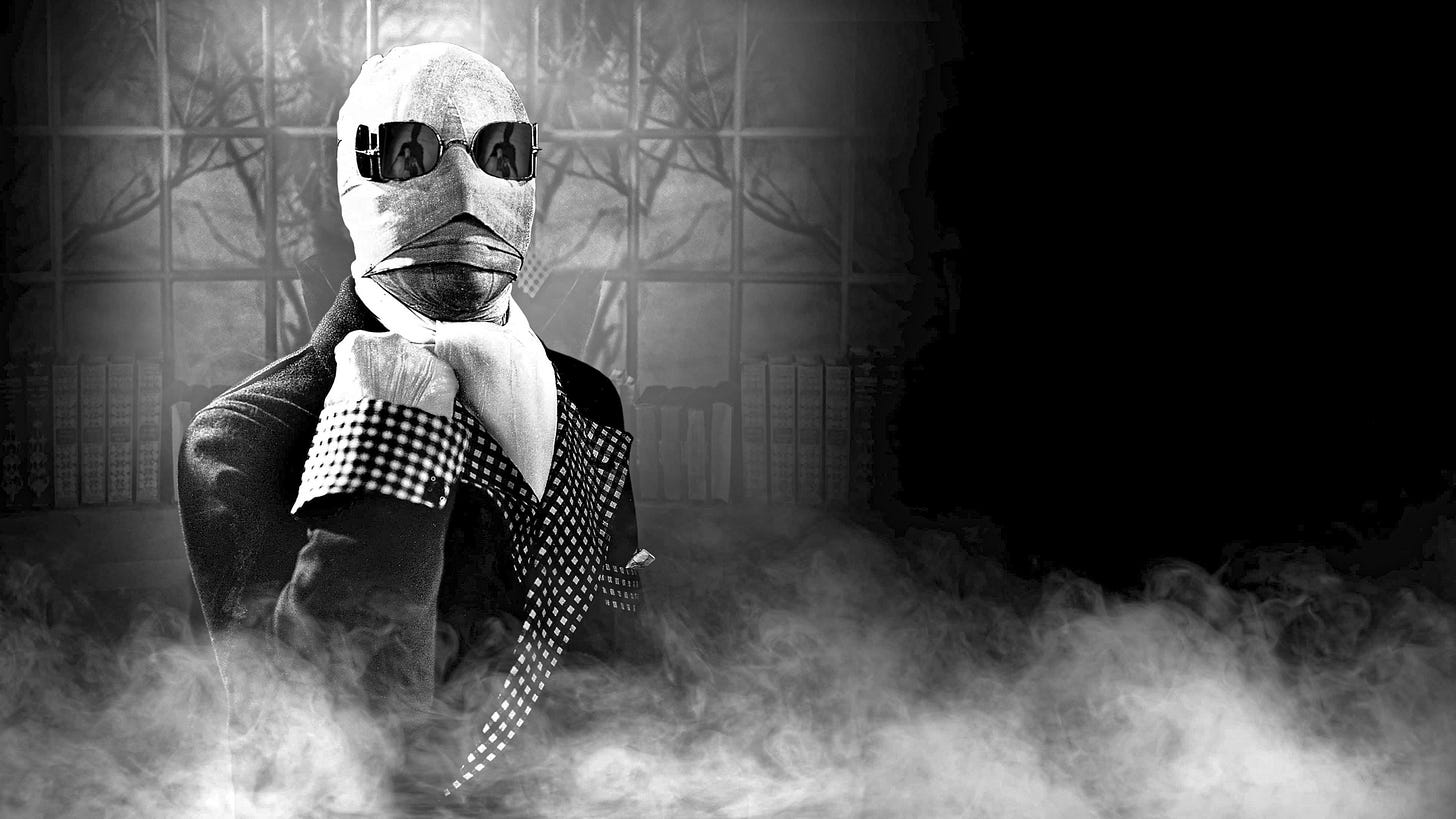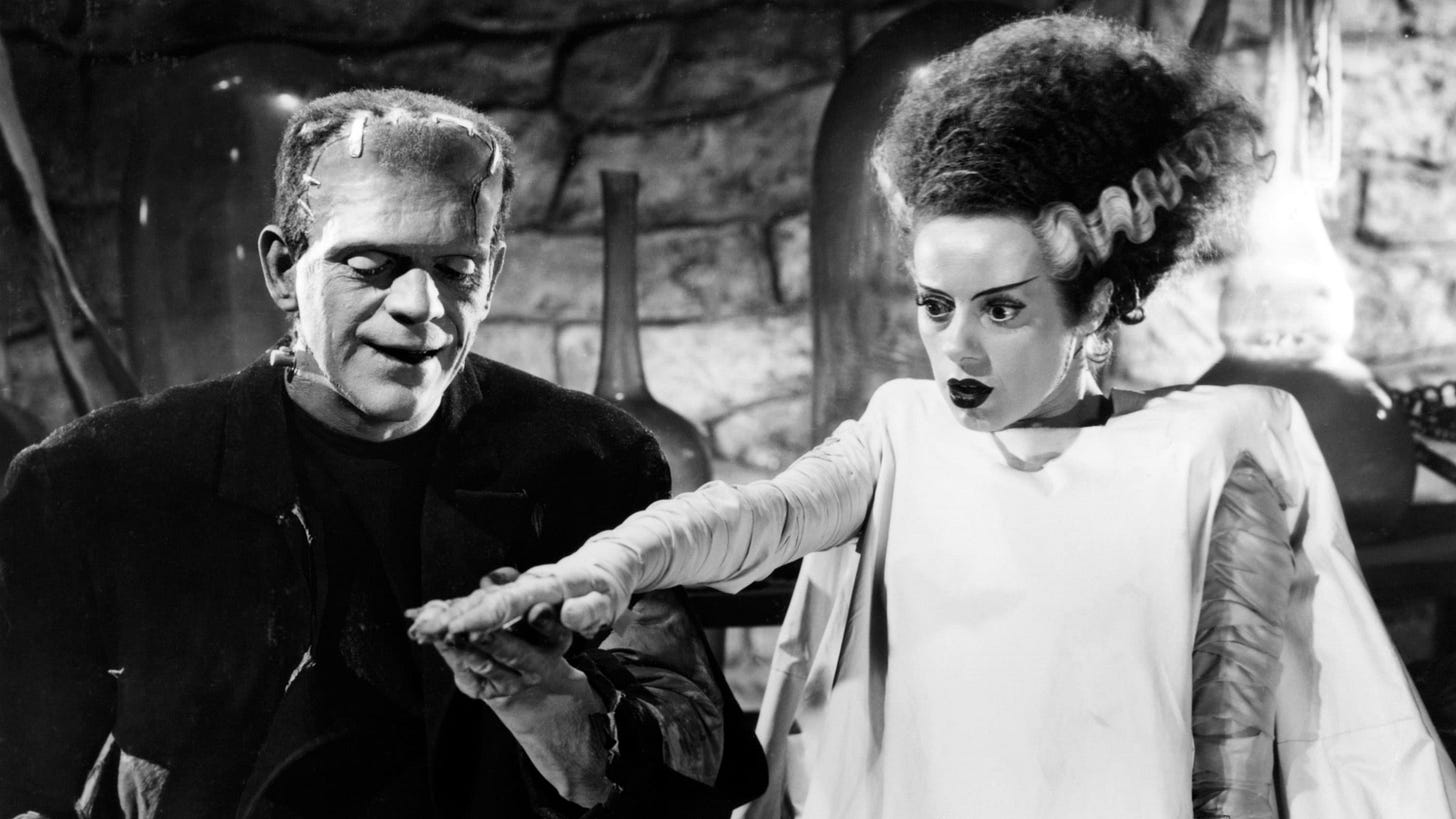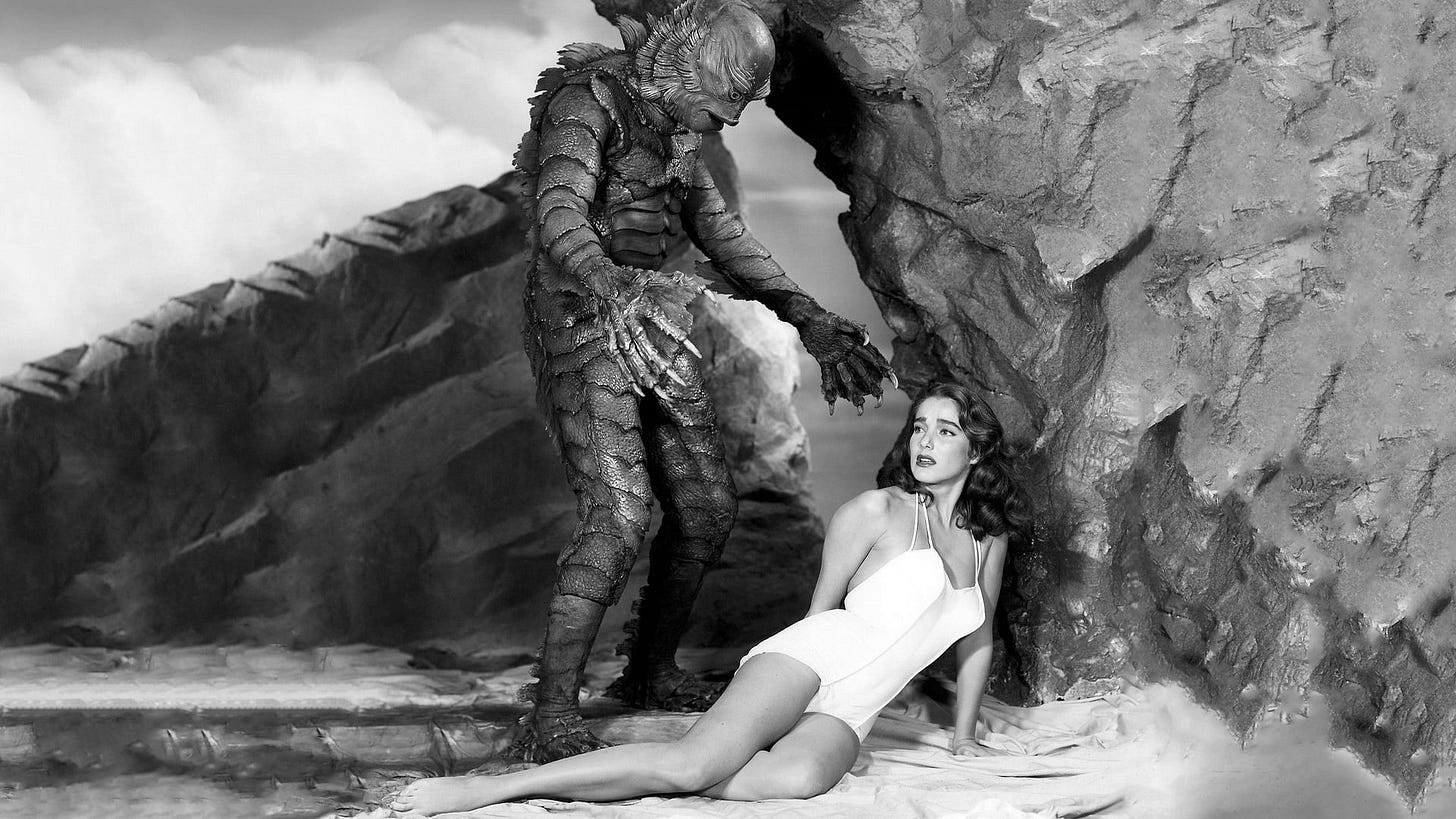The horror genre has a massive debt to the original monster movies Universal put out in the 20s-50s. At the time, horror films weren’t really a “thing,” but Universal saw the power of the genre and really officially started marketing them in the 30s. M
any of the elements of these early films still inspire horror films today.
These classic movies are still such a treat today, and a great way to dive into the genre yourself, or see how your kid reacts to the genre, since most aren’t really that scary. Here I’ll give my personal top five for you to try, or revisit, this spooky season.
5. Frankenstein | 1931 | James Whale
Dr Henry Frankenstein is obsessed with assembling a living being from parts of several exhumed corpses.
Starting the list is one of the films that really started it all. What can I say about this, when so much has been said over the last 90+ years. It’s arguably one of the two biggest horror monster films of all time—the other might show up later on this list.
James Whale captured lighting in a bottle with this film. That’s mostly due to the supernatural force of Boris Karloff as The Monster. Though, overlooked most of the time, is the equally excellent Colin Clive as Dr. Frankenstein and Dwight Frye as Fritz, the assistant in playing god.
The adaptation from the book is sleek, and the images are frightening. This is the film that I believe really helped cement the genre and Universal Pictures as a legit movie studio.
4. Dracula | 1931 | Tod Browning
A powerful and ruthless vampire named Count Dracula arrives in London to prey on young, socialite women. Standing in the vampire’s way, is a group of concerned men and the enigmatic Dr. Abraham Van Helsing.
The other half of the coin with Frankenstein is Browning’s Dracula. I personally enjoy this just a little more than ol’ Frank, mostly because I like vampires more.
The set design here is incredible, with some gorgeous lighting as well. Every time the light just crosses Lugosi’s eyes is cinema magic. Speaking of Lugosi, much like Karloff, he’s thrilling here. I would argue Karloff is the better actor overall, and had a better career, but there’s no denying the power of Lugosi’s Drac.
3. The Invisible Man | 1933 | James Whale
Working in Dr. Cranley’s laboratory, scientist Jack Griffin was always given the latitude to conduct some of his own experiments. His sudden departure, however, has Cranley’s daughter Flora worried about him. Griffin has taken a room at the nearby Lion’s Head Inn, hoping to reverse an experiment he conducted on himself that made him invisible. But the experimental drug has also warped his mind, making him aggressive and dangerous. He’s prepared to do whatever it takes to restore his appearance.
With the Invisible Man, Whale creates something scarier than just a tormented monster, trying to figure out his place in life. Claude Rains’ Dr. Griffin is hilariously frightening. This movie feels like a horror comedy, and it is funny, however, the good doctor is slowly losing his mind and loving it. It’s his performance that puts this ahead of the others. He’s possibly the best actor in any of the movies on this list.
Also, his kill count is much, much higher than the monsters…so maybe man is the biggest monster?
2. The Bride of Frankenstein | 1935 | James Whale
Dr. Frankenstein has not been killed as previously portrayed and now he wants to get away from the mad experiments. Yet when his wife is kidnapped by his creation, Frankenstein agrees to help him create a new monster, this time a woman.
For a long time, this was my favorite Universal monster film. Whale became a better film director in the years between the original and this sequel, and it really shows. The sets are perfectly shot and designed, the acting is even better than the original, and the story is a fascinating one. It dives into the idea of life and death even more than that original, and twists your assumptions. The Bride is also just a complete icon in the incredibly limited time she has on screen. Elsa Lanchester did some excellent work with this creature, and also gets to be Mary Shelley in the prologue.
There’s also some very intriguing modern interpretations as a queer film, which I find to be interesting. I don’t know if it was Whale’s intention to make a queer-coded film, but it really can be read that way. Whale was openly gay, so it’s not entirely out of the question. Once you read about it, it’d hard not to see it that way, which is another element that makes it stand above the rest.
Honorable Mentions
The Wolf Man | 1941 | George Waggner
By this point, Universal has really made a name for themselves. The Wolf Man feels like a more mature film than the scrappy 30s titles. Lon Chaney Jr. is an interesting lead, in that he doesn’t have as specific of a look as so many of these other actors did. I really like it, though, and werewolves are my personal favorite creature. The story might be a little dry to some, but I admit I have a bias towards it and quite love the movie.
Drácula | 1931 | George Melford
In the 30s, Universal was trying to expand into the foreign market and had begun making foreign-language films. This is a prime example of how they were going about that. This movie is on the exact same set as the previously mentioned Tod Browning one. The difference, besides language, is how these sets are lit and shot. I actually find this to be the better looking film. However, Carlos Villarías’ take on the Count is a little campier, which is fine, just different. I also think the pacing is much slower here, with an additional 20 minutes added, that doesn’t feel necessary. I would put Browning’s over this one, but this is still very good.
The Black Cat | 1934 | Edgar G. Ulmar
The first of eight films starring Lugosi and Karloff is an “adaptation” of the Edgar Allan Poe story. Truly, it has little to do with the story, but it is a good movie. It really sets the mood for a psychological thriller. That’s mostly why it’s an honorable mention, it’s not really a “monster” movie. The set is impeccable, and the characters are creepy. It’s the earliest film I’ve seen that feels like a psychological thriller, in that it plays with guilt and the darker parts of human nature. I also love the score. It’s not an original one, but it is nearly continuous classical music that’s been compiled. If you watch Frankenstein and Dracula, then think what if they were in a movie together, well here you go, it’s close enough.
1. Creature from the Black Lagoon | 1954 | Jack Arnold
A scientific expedition searching for fossils along the Amazon River discover a prehistoric Gill-Man in the legendary Black Lagoon.
I only saw this for the first time last year. I knew of the creature and had seen The Shape of Water, but had never taken in the original. As evidenced by its top placement, I fell for it. The acting is great, the plot is paced in a modern way, and the creature is just so cool—thanks Milicent Patrick, an overlooked designer and Disney animator.
The underwater shots are also just clear and beautiful. The way Ricou Browning as The Gill Man moves underwater is thrilling, it’s heeby jeeby inducing. It’s some gorgeous cinematography and choreography.
The movie has been riffed quite a bit, so some might find it to be a charming, but toothless film. I wholeheartedly disagree. It’s spooky, delightful, beautiful, and so much fun.
If you’ve never seen these classics, or it’s been a while since you have, I hope you find some time to check one out this spooky season. Many are streaming, or easily rentable online.
Frankenstein - Peacock Premium
Dracula - Amazon Prime
The Invisible Man - Amazon Prime
The Bride of Frankenstein - Peacock Premium
Horror as a genre is one I take in throughout the year. It’s around this specific time that certain types of horror, or specific titles, are viewed. The Universal monster movies feel like Halloween to me.
Season’s Screamings! Til next time!
- Colton










Can't argue with this list! Although I would rank Dracula's Daughter (1936) somewhere in there; it's an underrated gem with superb acting and ahead-of-its-time messaging.